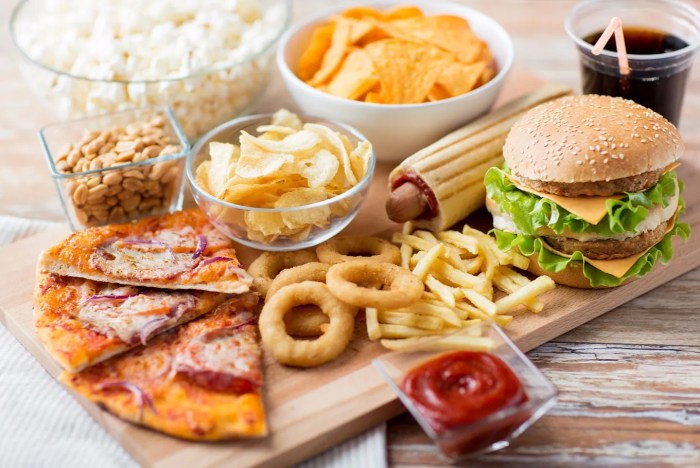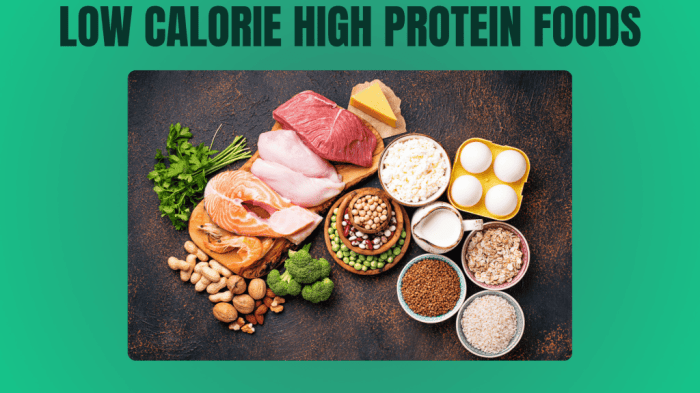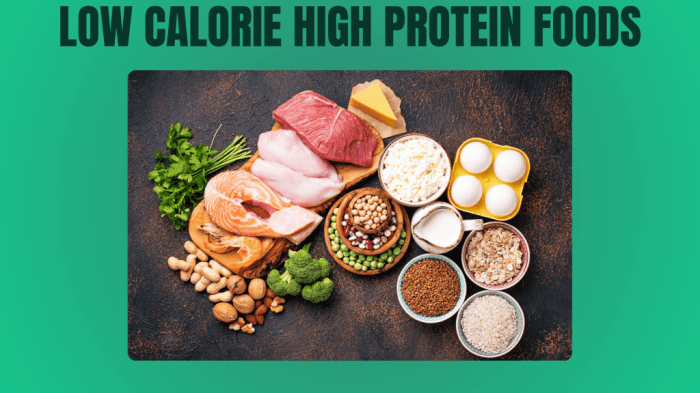What you can eat on a mechanical soft diet is a crucial guide for those navigating dietary restrictions. This detailed exploration provides a comprehensive understanding of acceptable foods, preparation methods, and nutritional considerations. It’s designed to be a supportive resource, helping you understand what to eat and how to approach meal planning effectively during this dietary phase.
From the basics of what a mechanical soft diet entails, to a detailed breakdown of permissible foods and their preparation, we’ll cover everything you need to know. We’ll also look at the nutritional aspects and offer tips for a smooth transition.
Introduction to Mechanical Soft Diet
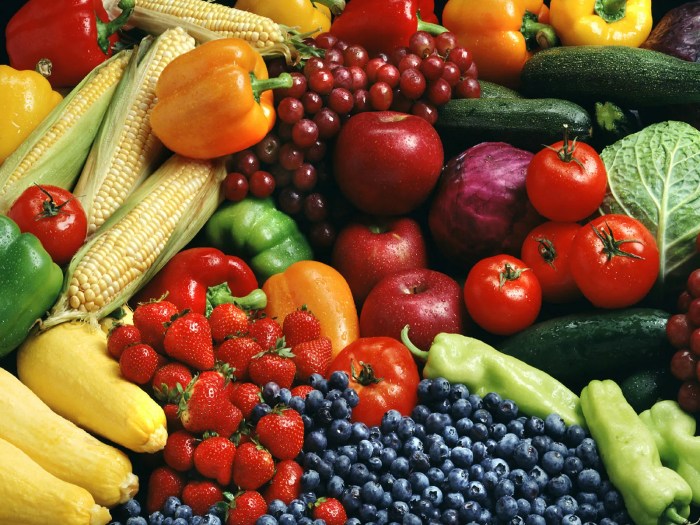
A mechanical soft diet is a therapeutic eating plan designed to be easily chewed and swallowed. It focuses on foods that are soft and require minimal chewing effort, reducing strain on the mouth, throat, and digestive system. This dietary approach is often recommended for individuals recovering from oral or digestive tract surgeries or injuries, or those experiencing difficulty chewing or swallowing.The rationale behind a mechanical soft diet is to minimize the risk of further complications and promote healing.
By avoiding hard-to-chew foods, individuals can prevent discomfort, pain, and potential injury to the affected areas. This dietary modification also aids in reducing the risk of choking or aspiration, a critical concern for those with swallowing difficulties. The focus on easily digestible foods supports faster recovery and promotes a more comfortable healing process.
General Principles of a Mechanical Soft Diet
The core principles of a mechanical soft diet revolve around consistency and texture. Foods are carefully selected to ensure they are soft, easily mashed, and readily swallowed without causing discomfort or difficulty. This includes avoiding any foods that require extensive chewing or have a significant degree of hardness.
A mechanical soft diet allows for a wide range of foods, including mashed potatoes, yogurt, and well-cooked vegetables. But sometimes, those late-night anxieties can really mess with your appetite. If you’re struggling with that, understanding the root causes of nighttime anxiety can be helpful – check out this resource on what causes anxiety at night. Once you’ve got a handle on that, you can focus on foods that are both soothing and easy to digest, like oatmeal or applesauce, making it easier to stick to your diet.
Key Characteristics of a Mechanical Soft Diet
| Feature | Mechanical Soft Diet | Regular Diet |
|---|---|---|
| Food Consistency | Soft, easily mashed, easily swallowed | Varies in consistency |
| Example Foods | Mashed potatoes, applesauce, yogurt, cooked cereals, scrambled eggs (well-cooked), soups (smooth), moist cooked fish, pasta (well-cooked), well-mashed fruits | Steak, pasta (al dente), pizza, vegetables (raw or hard-cooked), nuts, seeds, hard candies |
| Chewing Requirement | Minimal chewing required | Significant chewing required |
| Digestion Effort | Lower digestive effort | Higher digestive effort |
This table highlights the key differences between a mechanical soft diet and a regular diet. The mechanical soft diet prioritizes easily digestible foods that are gentle on the digestive system, in contrast to the wider variety and potentially harder textures of a regular diet. These characteristics are crucial for ensuring a comfortable and safe recovery.
Foods Allowed on a Mechanical Soft Diet
A mechanical soft diet is designed for individuals with difficulty chewing or swallowing. It focuses on foods that are easily processed and require minimal chewing effort, allowing for safe and comfortable consumption. This dietary approach promotes easier digestion and minimizes the risk of discomfort or complications.The key to a successful mechanical soft diet is selecting foods that are soft, smooth, and easy to swallow.
This allows for optimal nutrient intake without straining the digestive system. The foods should also be free of any hard or fibrous components that could cause irritation or difficulty in swallowing. Preparing these foods in appropriate ways further ensures easy consumption.
Fruits Suitable for a Mechanical Soft Diet
Fruits on a mechanical soft diet are typically prepared to eliminate any hard or fibrous parts that could be problematic. This often involves processing them into smooth textures.
- Applesauce: Mashed and strained applesauce is a common and easily digestible fruit option. The process of mashing and straining removes any coarse pieces, making it smooth and easy to swallow.
- Bananas: Fully ripe bananas are easily mashed or eaten whole if the texture is soft enough. The naturally soft consistency makes them a great choice.
- Smoothies: Fruit smoothies blended with liquids such as milk or yogurt can create a smooth and nutritious meal. Choose soft fruits for best results.
- Soft Berries: Berries that are fully ripe and soft, such as blueberries or raspberries, can be eaten whole or blended into a smooth consistency.
Vegetables Suitable for a Mechanical Soft Diet, What you can eat on a mechanical soft diet
Vegetables are often prepared in a way that removes any hard, fibrous, or tough components. The goal is to make them smooth and easy to swallow.
- Mashed Sweet Potatoes: Mashed sweet potatoes are a good source of nutrients. Pureeing them into a smooth consistency eliminates any chunks that might be difficult to swallow.
- Pureed Carrots: Pureed carrots create a smooth and easy-to-digest vegetable. The smooth texture makes them a good option for those with swallowing difficulties.
- Steamed Green Beans: Steaming green beans until tender-crisp creates a soft texture that is easier to swallow compared to raw or tough-cooked green beans.
- Vegetable Soups: Vegetable soups, prepared with soft vegetables, provide a good source of nutrients and hydration. The liquids in the soup also aid in swallowing.
Grains Suitable for a Mechanical Soft Diet
Grains should be cooked until soft and easily mashed. The texture should be smooth and readily swallowed.
- Cooked Oatmeal: Cooked oatmeal, especially when mashed or blended, is a very suitable grain for a mechanical soft diet. The soft texture makes it easy to swallow and digest.
- Mashed Potatoes: Mashed potatoes are another readily available and digestible option. Mashing them to a smooth consistency is key.
- Soft Rice: Soft, cooked rice that is easily mashed or pureed is an excellent choice. Avoid using hard or sticky rice.
Preparation Methods for Easy Consumption
The following table Artikels the categories of foods, specific items within each category, and the appropriate preparation methods for a mechanical soft diet.
| Category | Food Item | Preparation Method |
|---|---|---|
| Fruits | Applesauce | Mashed, strained |
| Vegetables | Mashed sweet potatoes | Mashed, pureed |
| Grains | Cooked oatmeal | Mashed, blended |
| Proteins | Scrambled eggs | Soft-scrambled |
| Proteins | Chicken broth | Liquid |
Foods to Avoid on a Mechanical Soft Diet
A mechanical soft diet is designed to be easy to chew and swallow, minimizing the strain on the mouth, throat, and digestive system. Certain foods are inherently difficult to manage in this context, posing potential choking hazards or causing discomfort. This section details these foods and provides gentler alternatives.
Foods Difficult to Chew and Swallow
Many foods require significant chewing to break down into manageable pieces for swallowing. These include foods that are naturally tough, fibrous, or have a dense texture. Difficulty chewing can lead to discomfort, pain, and potential complications. It’s crucial to avoid these foods until the mouth and throat have fully recovered.
- Tough Meats: Tough cuts of meat, such as brisket or roast beef, require extensive chewing to break down into digestible pieces. This can be especially challenging when recovering from oral or throat surgeries or conditions. Alternative options include finely minced or shredded meats, or well-cooked, tender cuts of poultry or fish.
- Raw Vegetables: Raw vegetables, particularly those with hard textures like carrots, celery, or broccoli, require significant chewing effort. The rough fibers and crisp texture can be difficult to swallow. Sautéed, steamed, or pureed versions of these vegetables provide softer alternatives that are easier to manage.
- Hard Fruits and Nuts: Hard fruits like apples, pears, and cherries, as well as nuts, are difficult to chew and may pose a choking hazard. Softer fruits like bananas, avocados, or ripe melons are better choices. Alternatives to nuts include nut butters (smooth variety), which provide a softer, more easily digestible version of the nutrients.
- Dried Fruits: Dried fruits, while nutritious, often have a tough texture that can be hard to swallow. Their concentrated sugars can also lead to further issues. Fresh or stewed fruits provide similar nutrients with a more manageable texture.
- Whole Grains: Whole grains like brown rice and whole-wheat bread require extensive chewing. Alternatives include cooked white rice, mashed potatoes, or soft-cooked pasta.
- Popcorn and Other Crunchy Foods: The small, hard pieces of popcorn and similar crunchy foods can pose a choking hazard and cause discomfort when chewing. Alternatives include softer snacks like yogurt, pudding, or mashed sweet potato.
Alternative Softer Versions
The goal of a mechanical soft diet is to facilitate easy chewing and swallowing. This involves preparing foods in ways that reduce their toughness and increase their softness. This allows for better digestion and reduces discomfort.
- Steamed or Pureed Vegetables: Steaming or pureeing vegetables significantly softens their texture, making them easier to chew and swallow. This process removes the rough fibers, making them a more digestible choice.
- Soups and Smoothies: Soups and smoothies are excellent options for providing nutrients in a liquid or semi-liquid form. These can be made with a variety of vegetables, fruits, and meats.
- Soft Cooked Meats: Tenderizing meats by cooking them longer or using techniques like slow cooking or braising reduces their toughness, making them easier to manage.
List of Foods to Avoid and Alternatives
| Food to Avoid | Reason | Suitable Alternative |
|---|---|---|
| Tough Meats (e.g., brisket) | Difficult to chew and swallow | Finely minced or shredded meats, tender cuts of poultry or fish |
| Raw Vegetables (e.g., carrots, celery) | Hard texture, difficult to chew | Steamed, sautéed, or pureed vegetables |
| Hard Fruits (e.g., apples) | Tough texture, choking hazard | Softer fruits (e.g., bananas, avocados) |
| Dried Fruits | Tough texture, concentrated sugars | Fresh or stewed fruits |
| Whole Grains (e.g., brown rice) | Extensive chewing required | Cooked white rice, mashed potatoes, soft pasta |
| Popcorn | Small, hard pieces, choking hazard | Soft snacks like yogurt, pudding, mashed sweet potato |
Meal Planning for a Mechanical Soft Diet: What You Can Eat On A Mechanical Soft Diet
Planning meals on a mechanical soft diet requires careful consideration of texture, nutrient density, and overall calorie needs. This approach focuses on easily digestible foods that minimize chewing and swallowing difficulties, while ensuring the body receives the necessary vitamins, minerals, and energy for recovery or maintenance. The key is to find delicious and nutritious options that support healing and well-being.
Sample Meal Plans
A well-structured mechanical soft diet meal plan for a week should incorporate a variety of textures and nutrients. It’s crucial to adapt the plan based on individual dietary needs, preferences, and any specific medical recommendations. The examples below are illustrative and should be tailored to personal circumstances.
Nutritional Considerations
When planning meals for a mechanical soft diet, focus on nutrient-dense foods that are easily chewed and swallowed. Prioritize foods rich in protein, vitamins, and minerals. For example, choose lean proteins like mashed chicken or fish, and incorporate fruits and vegetables that are soft and easily processed, such as pureed soups and stewed vegetables. Consider portion sizes to maintain a healthy calorie intake.
Hydration is essential, so ensure sufficient water intake throughout the day.
Balanced Meals and Snacks
Balanced meals on a mechanical soft diet include a combination of proteins, carbohydrates, and healthy fats. Examples of balanced meals include: a bowl of mashed sweet potato with a side of soft scrambled eggs, or a puree of vegetables with lean ground turkey. Snacks should be easily digestible and provide sustained energy. Smoothies, yogurt with fruit, or mashed avocado are good options.
Portion sizes should be controlled to avoid overeating.
Sample Weekly Meal Plan
| Day | Breakfast | Lunch | Dinner | Snacks | Nutritional Information (approximate) |
|---|---|---|---|---|---|
| Monday | Mashed banana with yogurt | Pureed chicken soup with soft bread | Mashed potato with steamed fish | Fruit smoothie, small bowl of applesauce | Protein: 25g, Carbohydrates: 150g, Fat: 15g |
| Tuesday | Oatmeal with mashed fruit | Vegetable puree with mashed tofu | Pureed lentil soup with toast | Cottage cheese with berries, small glass of milk | Protein: 30g, Carbohydrates: 170g, Fat: 20g |
| Wednesday | Scrambled egg with mashed avocado | Pureed vegetable and chicken stir-fry | Mashed carrots with tuna patties | Yogurt with granola, small handful of almonds | Protein: 28g, Carbohydrates: 160g, Fat: 18g |
| Thursday | Smoothie with protein powder | Mashed butternut squash soup | Pureed spinach with mashed chicken | Hard-boiled egg, small bowl of berries | Protein: 32g, Carbohydrates: 140g, Fat: 12g |
| Friday | Mashed banana with peanut butter | Pureed tomato soup with crackers | Mashed sweet potato with salmon | Apple slices with cream cheese, small glass of juice | Protein: 25g, Carbohydrates: 165g, Fat: 22g |
| Saturday | Scrambled egg with mashed avocado and toast | Pureed lentil soup with soft bread | Pureed vegetable and turkey stir-fry | Fruit smoothie, small bowl of oatmeal | Protein: 30g, Carbohydrates: 180g, Fat: 20g |
| Sunday | Oatmeal with mashed berries | Pureed vegetable and fish stew | Mashed cauliflower with mashed chickpeas | Cottage cheese with fruit, small glass of milk | Protein: 28g, Carbohydrates: 170g, Fat: 15g |
Nutritional Considerations
A mechanical soft diet, while designed for easier chewing and swallowing, can pose challenges to maintaining adequate nutrition. Understanding the importance of specific nutrients and incorporating high-nutrient foods is crucial for preventing deficiencies and supporting overall health during this dietary phase. This section will delve into the critical nutritional aspects of a mechanical soft diet, highlighting key nutrients, potential deficiencies, and how to combat them with suitable food choices.
Importance of Nutrition on a Mechanical Soft Diet
Proper nutrition is essential for maintaining strength, energy levels, and overall well-being, especially during recovery from illness or injury. A mechanical soft diet, despite its limitations, should provide sufficient nutrients to support healing and prevent further complications. This includes sufficient protein, vitamins, minerals, and carbohydrates to fuel the body’s metabolic processes. Adequate hydration is equally important, and the diet should be paired with enough fluids to avoid dehydration.
Key Nutrients Required
Maintaining optimal health requires a balance of essential nutrients. The following are crucial for the body’s various functions:
- Protein: Essential for building and repairing tissues, crucial for wound healing and maintaining muscle mass. Protein is vital for the production of enzymes, hormones, and antibodies.
- Vitamins: Essential for various bodily functions, including energy production, immune function, and cell growth. Different vitamins play specific roles in the body’s metabolic processes.
- Minerals: Vital for bone health, fluid balance, and nerve function. Minerals like calcium, iron, and potassium are important for overall well-being.
- Carbohydrates: Provide energy for daily activities and support the body’s metabolic functions. Complex carbohydrates are preferred over simple sugars for sustained energy.
- Healthy Fats: Crucial for hormone production, nutrient absorption, and brain function. Healthy fats are necessary for maintaining cell membranes and promoting overall well-being.
Potential Nutritional Deficiencies and How to Address Them
A mechanical soft diet may restrict certain food groups, potentially leading to nutritional deficiencies. Careful meal planning and supplementation (with doctor approval) can mitigate these risks.
- Iron Deficiency: Reduced consumption of red meat and iron-rich vegetables can lead to iron deficiency. This can be addressed by incorporating iron-rich foods like fortified cereals, legumes, and leafy greens into the diet. Also, vitamin C-rich foods can enhance iron absorption.
- Calcium Deficiency: Limited intake of dairy products can lead to calcium deficiency. This can be countered by consuming calcium-fortified foods, such as plant-based milks and certain breakfast cereals. Adding leafy greens and other calcium-rich vegetables can also help.
- Vitamin Deficiency: Reduced variety in food choices may lead to deficiencies in specific vitamins. Consuming a diverse range of fruits, vegetables, and fortified foods can help prevent vitamin deficiencies.
High-Nutrient Foods for a Mechanical Soft Diet
This table lists some high-nutrient foods suitable for a mechanical soft diet, highlighting their nutritional content:
| Food | Nutritional Content (approximate) |
|---|---|
| Oatmeal | Good source of fiber, complex carbohydrates, and iron. |
| Mashed Sweet Potatoes | Rich in vitamin A, fiber, and potassium. |
| Pureed Vegetables | Excellent source of vitamins, minerals, and fiber, depending on the vegetables. |
| Soft-cooked eggs | High in protein, vitamins, and minerals. |
| Yogurt (plain, low-sugar) | Good source of protein, calcium, and probiotics. |
Dietary Modifications for Specific Conditions
A mechanical soft diet isn’t a one-size-fits-all approach. Individual needs and underlying medical conditions necessitate specific dietary modifications. Understanding these adaptations is crucial for safe and effective nutrition while following this diet. This section will delve into tailoring the mechanical soft diet for various health concerns, emphasizing adjustments in portion sizes and textures.A key consideration in modifying a mechanical soft diet is the patient’s specific condition.
For example, someone recovering from surgery will have different needs than someone with gastroesophageal reflux disease (GERD). The goal is to minimize discomfort while ensuring adequate nutrient intake.
Dietary Modifications for GERD
Individuals with GERD often experience heartburn and indigestion. A mechanical soft diet for GERD necessitates foods that are easily digested and won’t trigger these symptoms. Avoid acidic and spicy foods, as well as those high in fat. The goal is to minimize stomach acid production and promote comfortable digestion.
Dietary Modifications for Difficulty Swallowing
Difficulty swallowing, or dysphagia, requires careful attention to food textures. The mechanical soft diet’s focus on easily chewed and swallowed foods is essential. Foods should be finely ground, pureed, or mashed, ensuring they are not too hard or too dry. This allows for smooth passage through the esophagus.
Dietary Modifications for Post-Surgery Recovery
Post-surgical patients often need a diet that’s gentle on the digestive system while providing adequate nutrients for healing. The mechanical soft diet is well-suited for this. Initial meals might be very small, focused on easily digestible foods. As the patient progresses, portions can be gradually increased. Nutrient-rich choices should be incorporated.
Dietary Modifications Summary Table
| Condition | Dietary Adjustments (Portion Sizes & Textures) | Example Foods |
|---|---|---|
| GERD | Small, frequent meals; avoid acidic/spicy foods; choose low-fat options; soft, easily chewed textures. | Mashed potatoes, cooked oatmeal, well-cooked vegetables, baked fish. |
| Difficulty Swallowing | Pureed, mashed, or finely ground foods; avoid hard, dry, or chunky items. | Pureed soups, applesauce, mashed sweet potatoes, yogurt (smooth). |
| Post-Surgery Recovery | Small portions initially; increase gradually as tolerated; focus on easily digested foods; consider nutrient-dense options. | Soft cooked eggs, plain yogurt, scrambled eggs (cooked very softly), bread (very soft). |
“Individualized dietary plans are crucial for patients following a mechanical soft diet. Close collaboration with a registered dietitian or healthcare professional is vital for creating a safe and effective meal plan tailored to the specific needs of the patient.”
Recipes for Mechanical Soft Diet
A mechanical soft diet is crucial for individuals experiencing difficulty chewing or swallowing. These recipes are designed to be easily digestible and provide essential nutrients while minimizing the effort required for consumption. They emphasize soft textures and readily available ingredients.This section details simple, delicious recipes suitable for a mechanical soft diet. Each dish prioritizes soft textures and minimal chewing requirements.
The nutritional information accompanying each recipe highlights the essential vitamins and minerals that are important for maintaining health and wellbeing.
Breakfast Recipe: Oatmeal with Banana and Berries
Oatmeal is a fantastic source of fiber and complex carbohydrates. For a mechanical soft diet, use rolled oats instead of quick oats, as they have a softer texture. Combine with ripe banana and soft berries for a complete and flavorful breakfast.
Ingredients:
- 1/2 cup rolled oats
- 1 cup unsweetened almond milk (or other milk)
- 1/2 ripe banana, mashed
- 1/4 cup mixed soft berries (strawberries, blueberries)
- 1 teaspoon honey or maple syrup (optional)
Instructions:
- Combine oats and milk in a saucepan.
- Bring to a boil, then reduce heat and simmer for 5-7 minutes, or until oats are cooked.
- Stir in mashed banana, berries, and sweetener (if using).
- Serve warm.
Nutritional Information (approximate per serving):
Calories
A mechanical soft diet allows for a wide variety of foods, but it’s important to choose items that are easy to chew and swallow. Things like mashed potatoes, yogurt, and scrambled eggs are perfect. If you’re unsure about a particular food, checking out resources like this one on determining if a lump is a concern or perhaps a lymph node might be helpful: is it a lump or a lymph node.
For a mechanical soft diet, avoid anything too crunchy or hard, focusing instead on smooth textures that are gentle on your digestive system. Pureed soups and well-cooked vegetables are also good options.
300
Protein
Speaking of soft foods, a mechanical soft diet lets you enjoy things like mashed potatoes, yogurt, and scrambled eggs. If you’ve ever been unfortunate enough to encounter a stingray, though, knowing how to treat a stingray sting is crucial – check out this guide how to treat a stingray sting for detailed advice. Smoothies and soups are also excellent choices for this diet, making mealtimes easier and more enjoyable, even if you’ve had a bit of an unfortunate encounter.
5g
Carbohydrates
50g
Fiber
5g
Lunch Recipe: Chicken and Vegetable Soup
Soups are excellent for a mechanical soft diet, as the soft consistency makes them easy to swallow. This recipe utilizes shredded chicken and soft vegetables for a wholesome and satisfying meal.
Ingredients:
- 1 cup shredded cooked chicken breast
- 1 cup finely diced carrots
- 1 cup finely diced celery
- 1 cup finely diced zucchini
- 2 cups low-sodium chicken broth
- 1 teaspoon dried herbs (e.g., thyme, oregano)
- Salt and pepper to taste
Instructions:
- Combine all ingredients in a saucepan.
- Bring to a boil, then reduce heat and simmer for 15-20 minutes, or until vegetables are tender.
- Adjust seasoning as needed.
- Serve hot.
Nutritional Information (approximate per serving):
Calories
250
Protein
20g
Carbohydrates
15g
Fiber
5g
Dinner Recipe: Mashed Sweet Potato with Salmon
This recipe provides a balanced meal with soft textures. Mashed sweet potatoes offer vitamins and fiber, while salmon provides protein and healthy fats.
Ingredients:
- 1 medium sweet potato, peeled and cubed
- 1/2 cup low-sodium chicken broth
- 1/4 cup cooked, flaked salmon
- 1/4 teaspoon salt
- 1/4 teaspoon black pepper
Instructions:
- Steam or boil sweet potato until tender.
- Mash sweet potato with a fork until smooth.
- Add broth and seasonings.
- Gently fold in cooked salmon.
- Serve warm.
Nutritional Information (approximate per serving):
Calories
280
Protein
15g
Carbohydrates
35g
Fiber
5g
Tips for Smooth Transition
Embarking on a mechanical soft diet can feel daunting, but a smooth transition is achievable with careful planning and preparation. Understanding the dietary changes and incorporating them gradually will make the experience less stressful and more manageable. This section provides practical advice to help you navigate the transition successfully.
Gradual Introduction
Implementing the mechanical soft diet doesn’t require an overnight overhaul. Start by incorporating a few soft foods into your existing meals. Gradually increase the proportion of soft foods while reducing the amount of harder-to-chew foods. This approach allows your digestive system to adjust without overwhelming it. For example, if you typically have a sandwich for lunch, start with a soft sandwich filling on a soft roll instead of a hard crusty one.
Meal Planning Strategies
Planning your meals in advance is crucial for a smooth transition. Create a weekly meal plan incorporating a variety of soft foods. This will ensure you’re getting a balanced intake of nutrients and prevent any unwanted dietary gaps. Include options for breakfast, lunch, dinner, and snacks. This plan can be flexible, allowing you to adapt to your needs and preferences.
Portion Control
Portion control is key when adjusting to a mechanical soft diet. Smaller portions of soft foods are easier to manage and digest. Overeating can lead to discomfort and indigestion. Pay attention to your body’s signals and eat when you’re hungry, but stop when you’re satisfied, not full.
Hydration
Adequate hydration is essential for digestion and overall health. Drinking plenty of fluids throughout the day, especially water, is crucial. Carry a water bottle with you and sip water regularly. Avoid sugary drinks, as they can hinder digestion.
Addressing Potential Challenges
Transitioning to a new diet can present challenges. One common challenge is the perceived lack of variety in soft foods. However, with careful meal planning and exploration, you can find many tasty and nutritious options. Another potential challenge is a loss of appetite. If this happens, focus on small, frequent meals and choose foods that are appealing and easy to eat.
Tips and Tricks for a Smooth Transition
- Start slowly: Gradually introduce soft foods into your diet instead of making drastic changes.
- Focus on variety: Explore different types of soft foods to maintain a balanced diet.
- Prepare meals in advance: Planning your meals for the week can prevent you from reaching for less healthy options when you’re short on time.
- Incorporate snacks: Healthy snacks can help prevent feelings of hunger and keep your energy levels up.
- Consult a registered dietitian: A registered dietitian can provide personalized dietary advice and meal planning support.
- Listen to your body: Pay attention to how your body reacts to different foods and adjust your intake accordingly.
- Choose appealing options: Select foods that you enjoy to make the transition more pleasant.
- Consider dietary supplements: If necessary, consult a doctor or registered dietitian about supplements to ensure you’re getting the necessary nutrients.
- Stay positive: Maintaining a positive attitude can help you navigate the challenges of the transition.
Wrap-Up
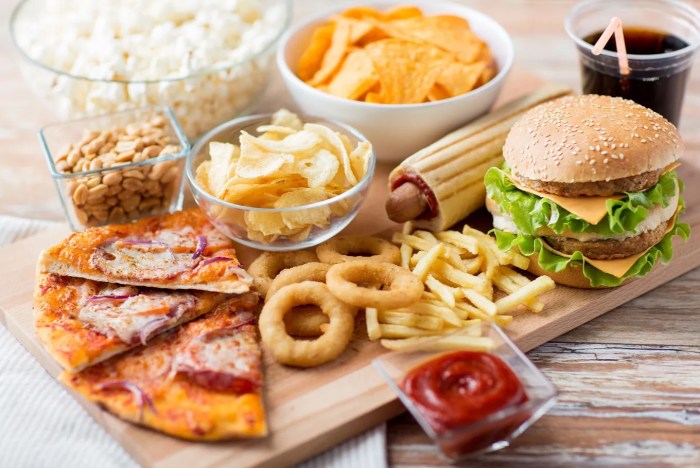
In conclusion, navigating a mechanical soft diet can feel overwhelming, but with a clear understanding of allowed foods, preparation techniques, and nutritional needs, it becomes manageable. This guide offers a solid foundation for successfully adopting and adapting this diet. Remember to consult your doctor or a registered dietitian for personalized advice tailored to your specific needs.
